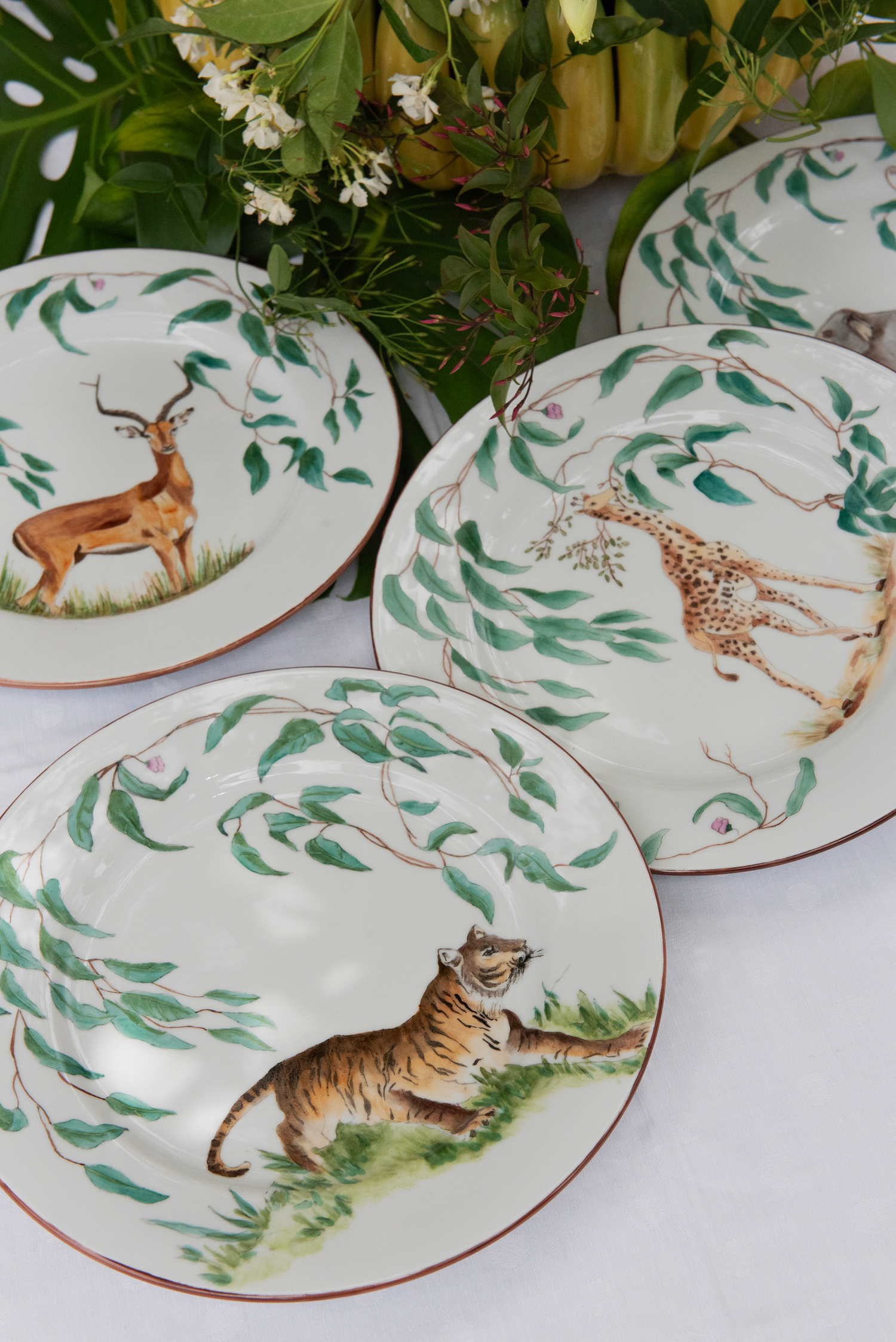Painting on porcelain plates is an ancient art form that blends creativity with craftsmanship, turning everyday objects into stunning works of art. This tradition, which has spanned centuries, continues to inspire artists around the world today. At EVM Porcelain, we embrace this age-old craft, creating beautifully illustrated plates that celebrate the fusion of fine art and functionality. Whether for collection, decoration, or dining, painted porcelain plates bring elegance and personality to any space. In this blog post, we’ll explore the history, techniques, and artistry behind painting on porcelain plates.
A Brief History of Porcelain Plate Painting
Porcelain painting dates back to ancient China, where porcelain was first discovered during the Tang Dynasty (618–907 AD). Artists began decorating these finely crafted plates with intricate designs, often inspired by nature, landscapes, and cultural symbols. Over time, the art of porcelain painting spread across Asia, the Middle East, and Europe, evolving to incorporate local styles and techniques.
In the 18th century, Europe saw a surge in porcelain plate painting, particularly in countries like France and Germany, where porcelain factories such as Meissen and Limoges became world-renowned for their exquisite hand-painted designs. Today, painting on porcelain remains a respected and admired art form, with modern artists continuing to push creative boundaries using this delicate medium.
The Artistic Process: From Canvas to Plate
Painting on porcelain is a unique experience that requires a different approach from traditional canvas painting. The smooth, glossy surface of porcelain presents both challenges and opportunities for artists. At EVM Porcelain, we begin each piece with an original hand-painted illustration, often inspired by the natural world, particularly the wildlife and landscapes of Africa.
The process starts with a meticulous design, hand-painted with special pigments that are compatible with porcelain. These pigments are applied in layers to achieve the desired depth and richness of color. The challenge lies in the fact that porcelain doesn’t absorb paint like paper or canvas, so every brushstroke must be carefully planned and executed.
Once the painting is complete, the porcelain plate is fired in a kiln at high temperatures. This process ensures the durability of the design, fusing the pigments with the porcelain surface to create a permanent, glossy finish. In the case of EVM Porcelain plates, the hand-painted illustrations are then printed on high-quality porcelain using advanced techniques, preserving the intricate details and vibrant colors of the original artwork.
Why Paint on Plates?
For artists like our founder, Estelle von Mentzingen, painting on porcelain plates offers a unique canvas to express creativity. Unlike traditional canvases, plates serve both an aesthetic and functional purpose, bridging the gap between fine art and everyday use. The circular shape of a plate also presents an interesting challenge, encouraging artists to think about composition and design in new ways.
Painting on plates allows for a wide range of styles and themes. Whether depicting delicate floral patterns, bold wildlife illustrations, or intricate geometric designs, each plate becomes a statement piece, blending beauty and utility. This versatility is what makes painted porcelain plates so appealing to collectors, decorators, and those looking to elevate their dining experience.
The Beauty of Hand-Painted Designs
Hand-painted porcelain plates hold a special allure because each piece is unique. The care, skill, and creativity that go into each brushstroke result in a one-of-a-kind work of art. At EVM Porcelain, our hand-painted illustrations reflect Estelle’s deep connection to nature, particularly the African wildlife that inspires many of our collections.
The “A Taste of Africa” collection, for example, features hand-painted designs of iconic animals like elephants, giraffes, and parrots, capturing the spirit of the African continent. These illustrations are then printed onto porcelain plates, making the beauty of hand-painted art accessible while maintaining the character and uniqueness of the original designs.
Painting as a Decorative and Functional Art
One of the most appealing aspects of painted porcelain plates is their versatility. They are as much a decorative item as they are a functional one. Whether displayed on a wall, set on a table, or used for dining, painted plates add a touch of elegance and sophistication to any space.
For collectors, hand-painted porcelain plates offer the opportunity to own unique, timeless pieces of art. Their enduring beauty makes them ideal for display, while their durability allows them to be used for special occasions. Each plate serves as a conversation piece, showcasing the artist’s talent and creativity.
For those who appreciate fine dining, using hand-painted porcelain plates elevates the dining experience. Serving food on beautifully crafted plates adds an element of luxury to everyday meals or special gatherings, creating a memorable atmosphere for guests.
Conclusion: Bringing Art to Life on Porcelain Plates
Painting on porcelain plates is a celebration of creativity, craftsmanship, and tradition. At EVM Porcelain, we are proud to carry on this timeless art form, combining the beauty of hand-painted designs with modern production techniques to create plates that are both decorative and functional. Our collections, inspired by the natural world, particularly African wildlife, bring a touch of elegance and art into your home.
Whether you’re an art collector, a home decorator, or simply someone who appreciates beautiful tableware, painted porcelain plates offer a unique way to bring art to life. Explore our collections and discover how the art of porcelain can enrich your home and dining experience.


